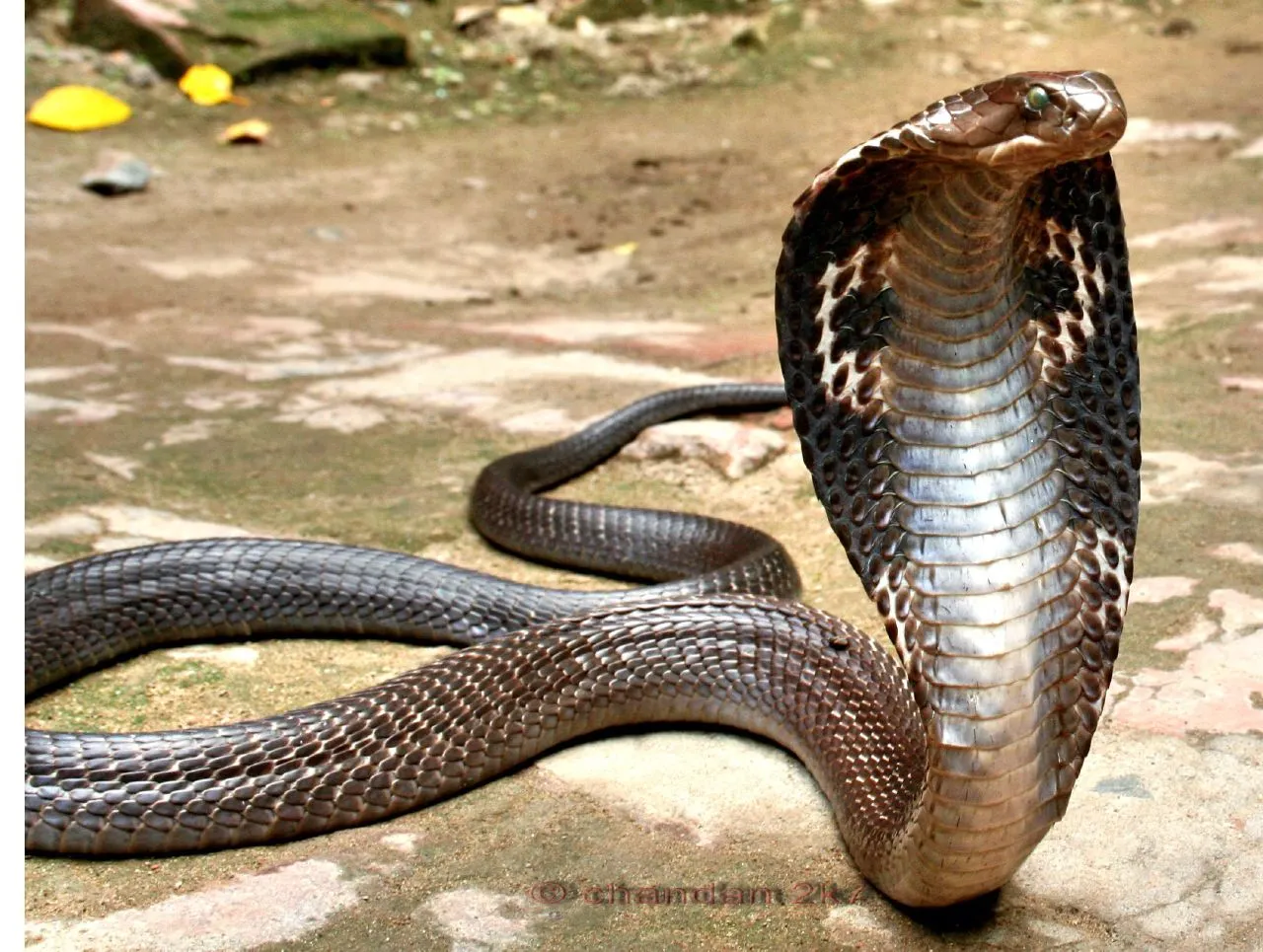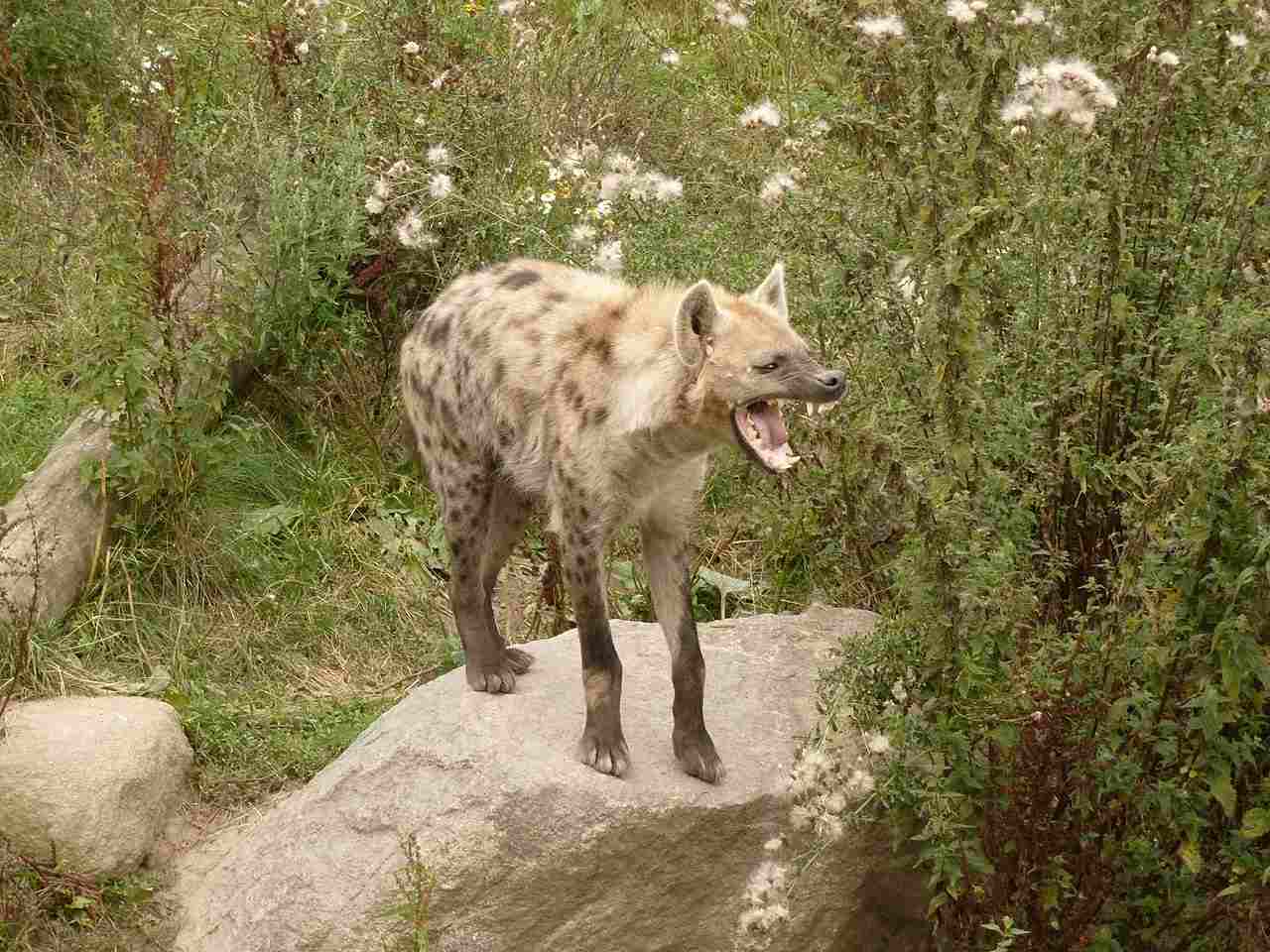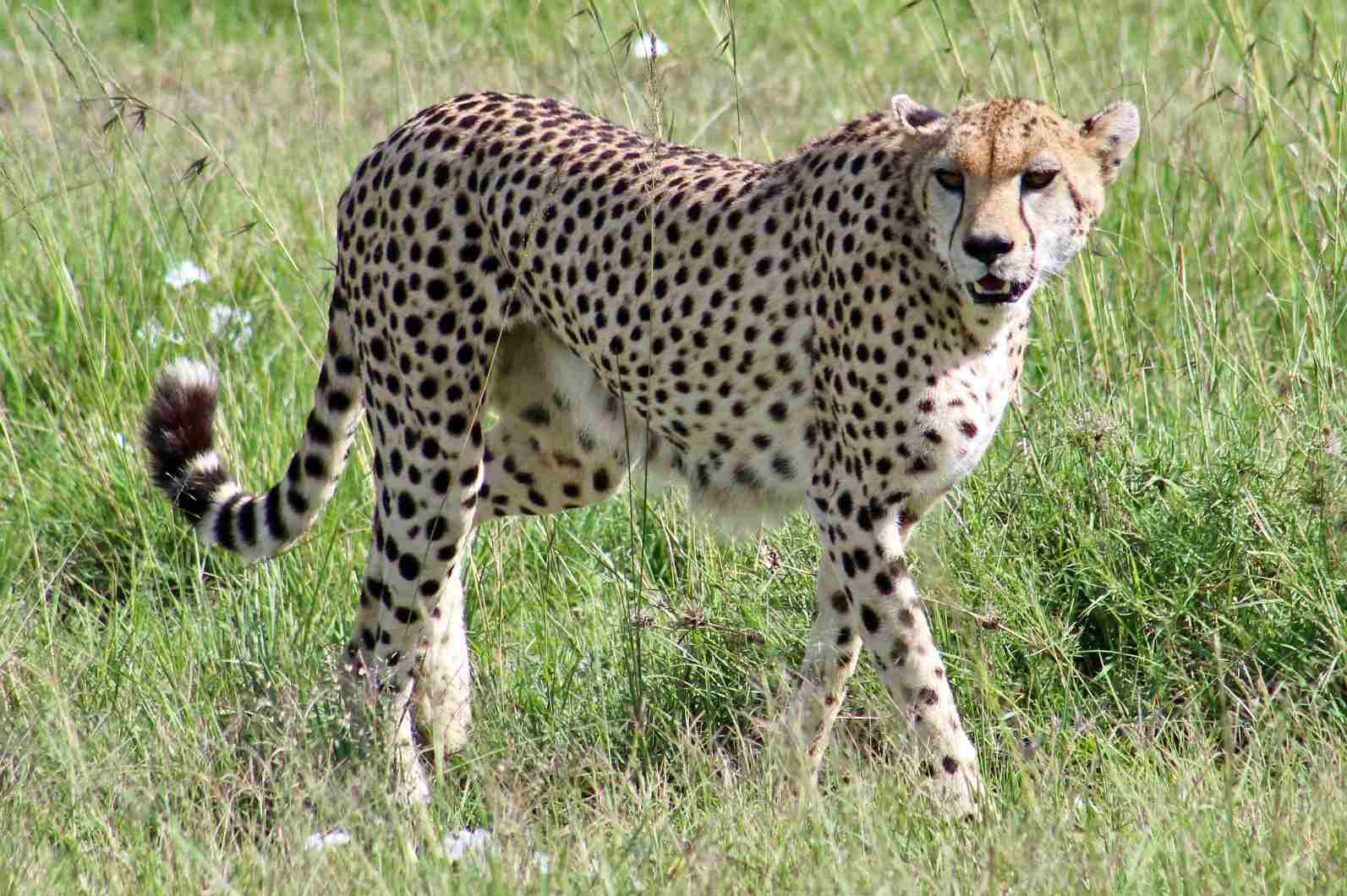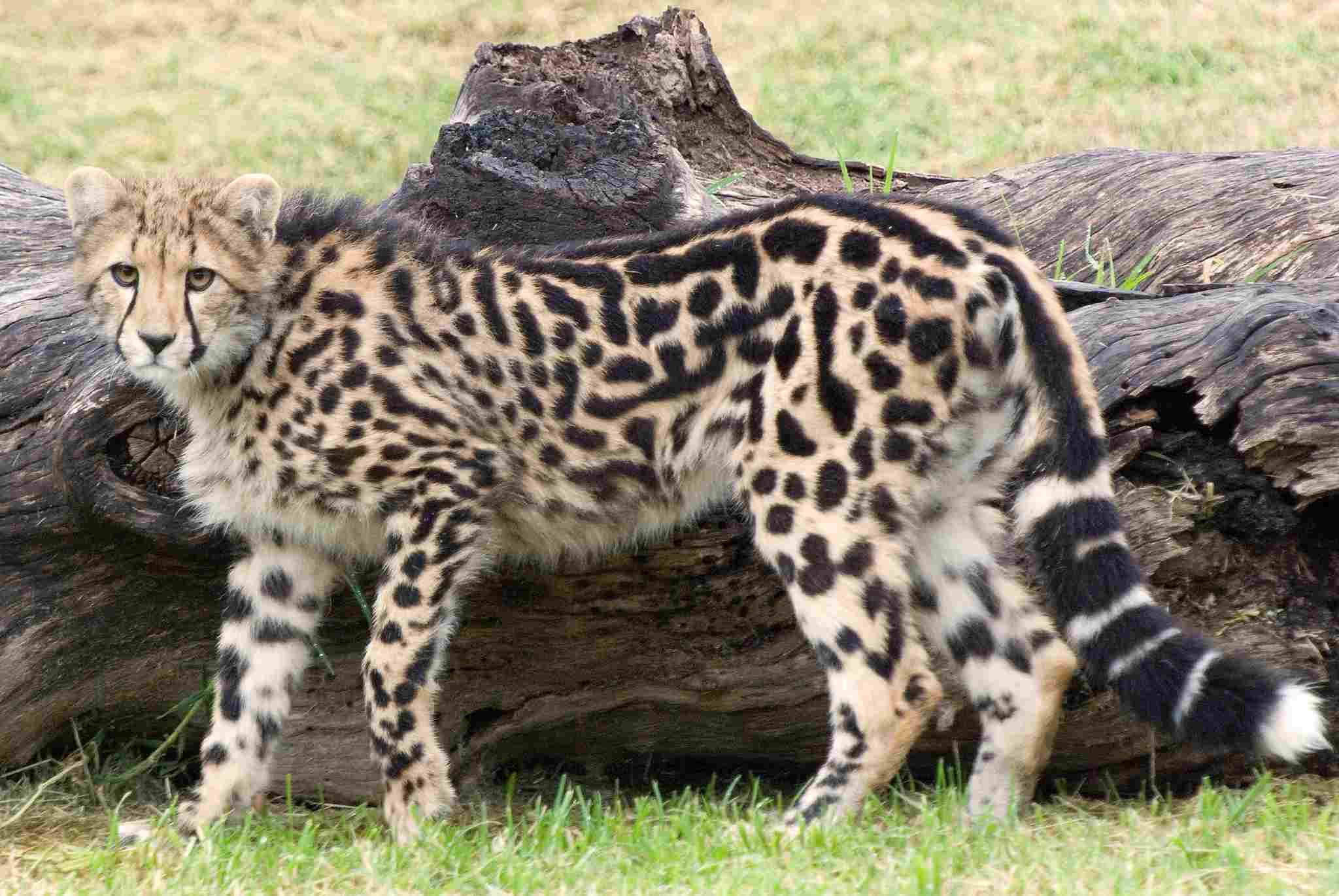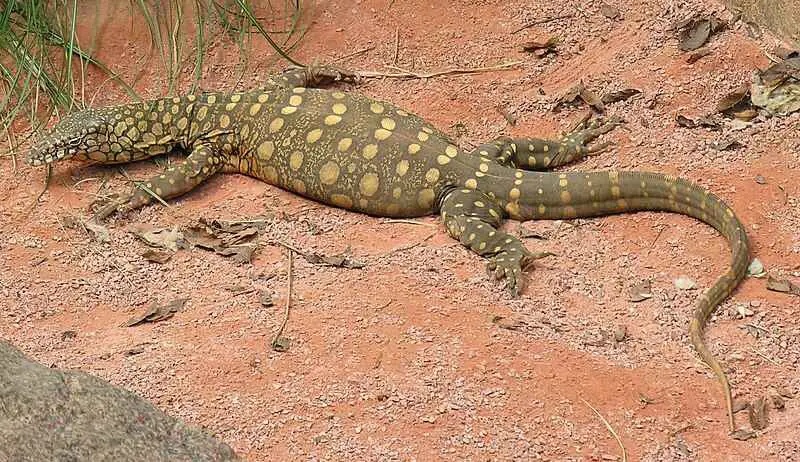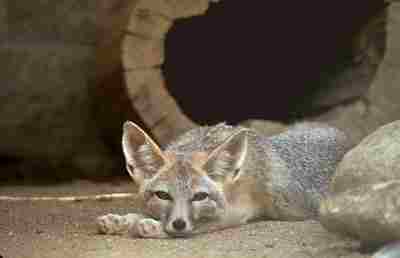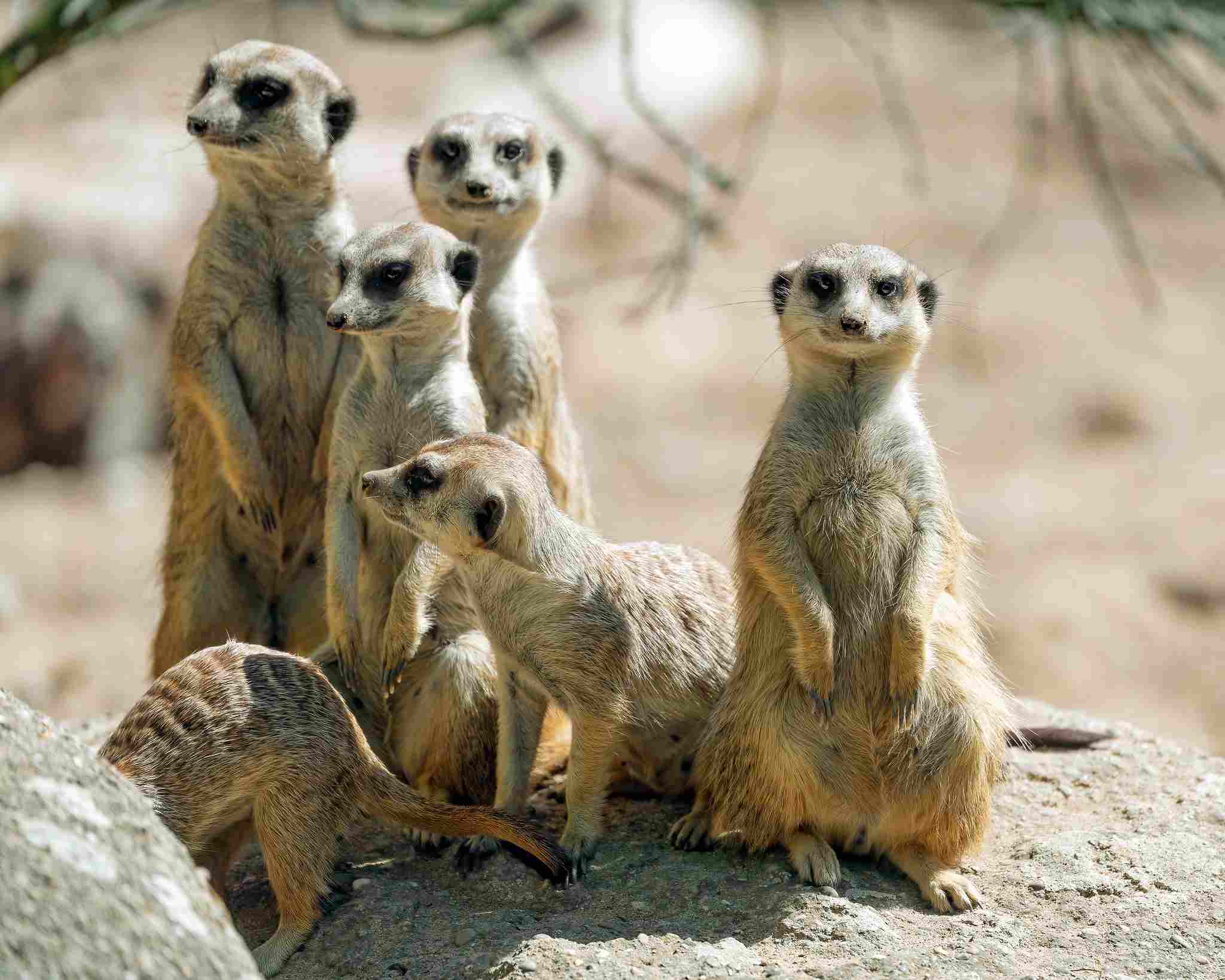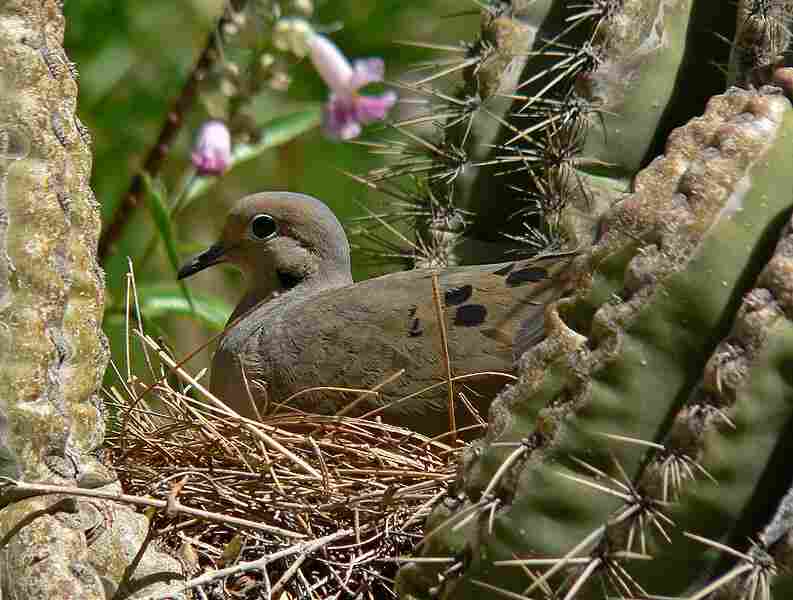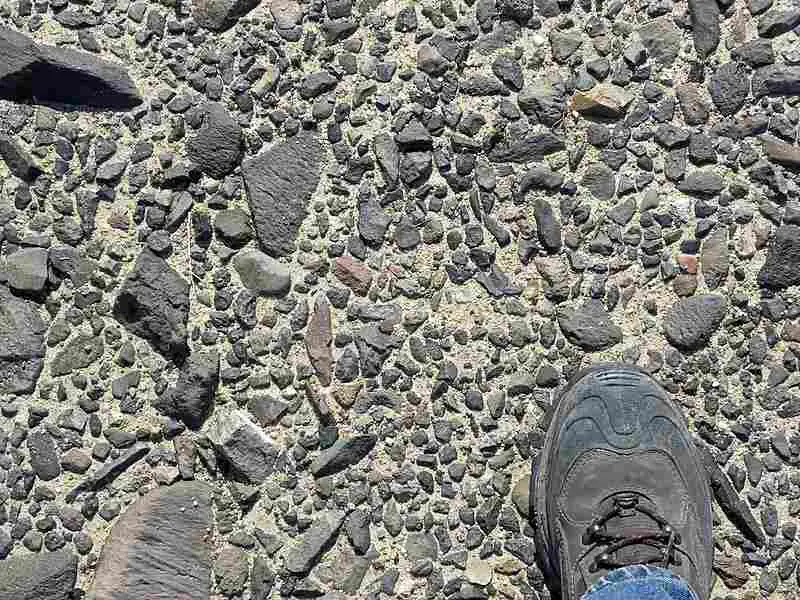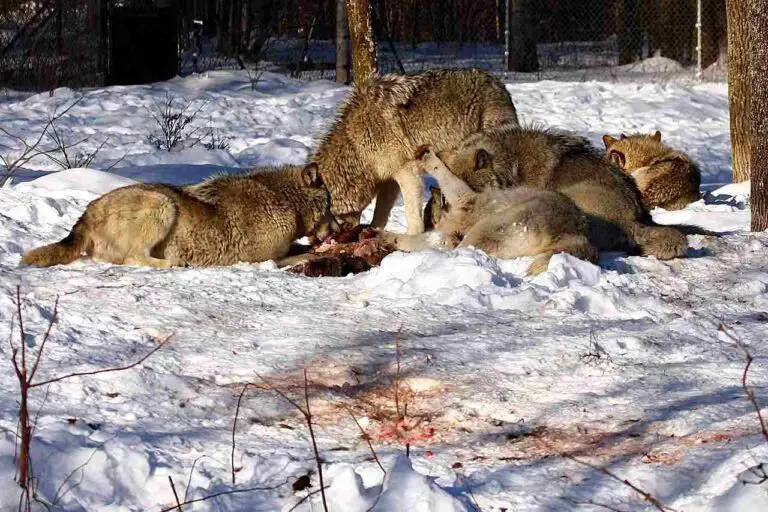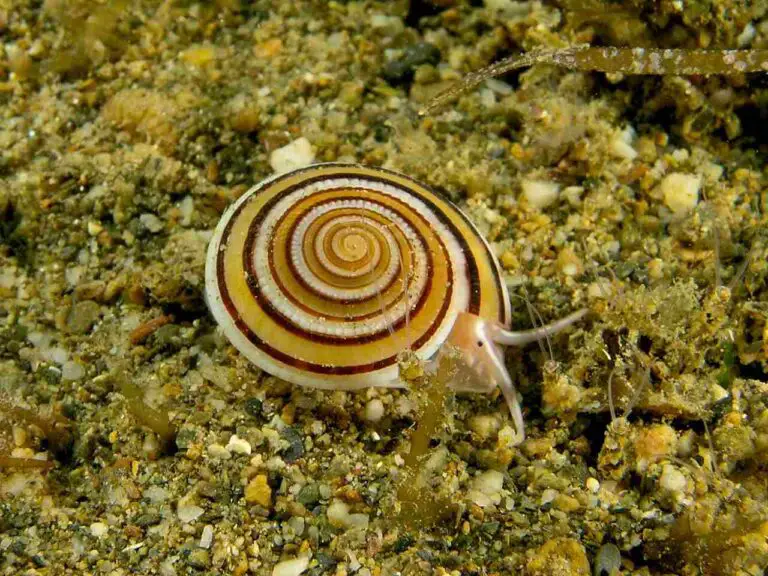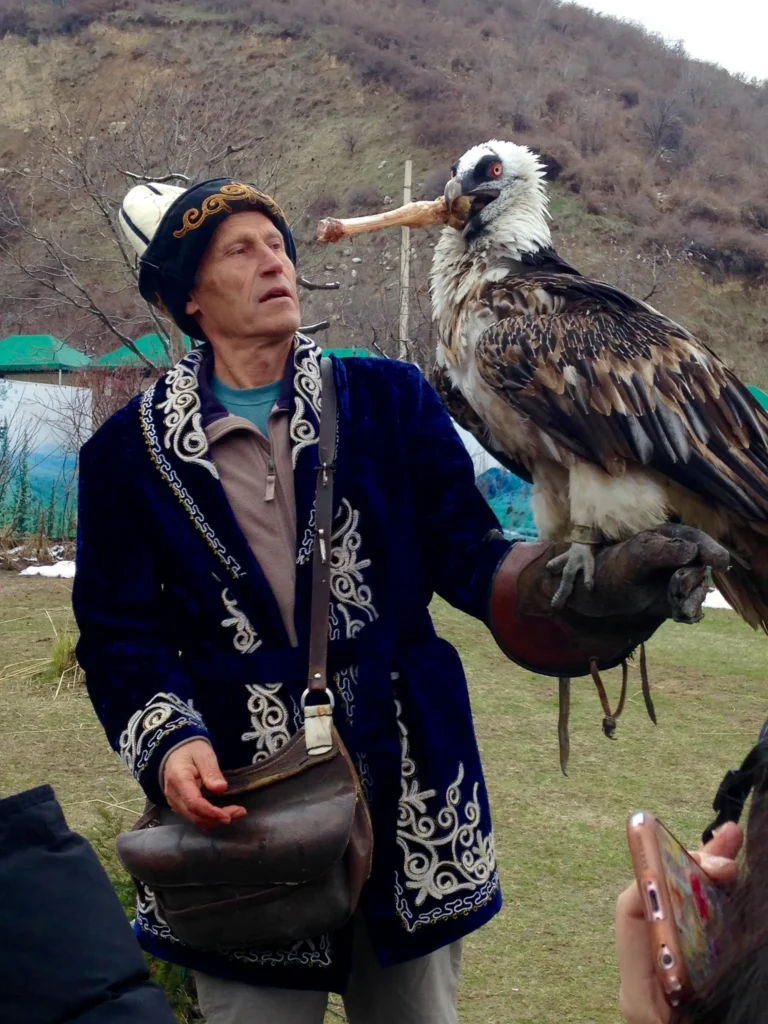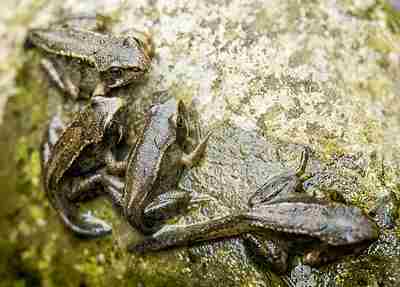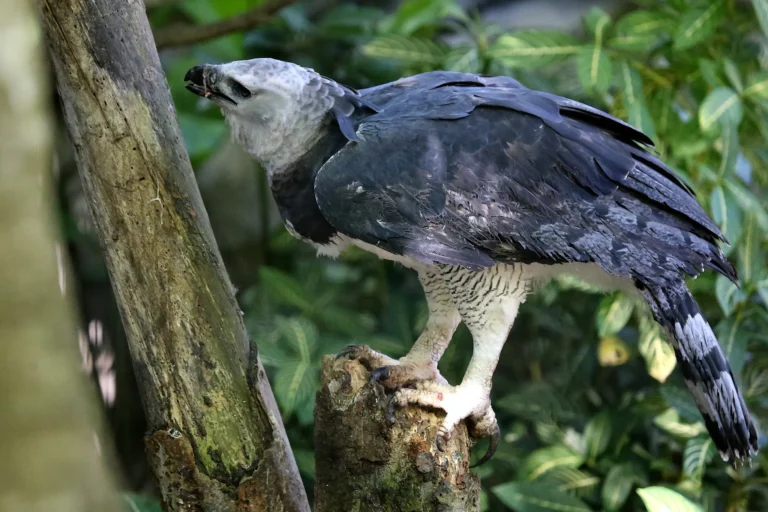9+ Predators In The Sahara Desert Ecosystem Discussed
Examples of predators in the Sahara desert are the caracal, striped hyena, cheetah, horned viper, and hawk. These predators play crucial roles in maintaining a balanced ecosystem by controlling prey populations and contributing to nutrient cycling. Despite their ecological importance, they often face threats from human activity, habitat loss, and misunderstanding, underscoring the need for conservation efforts.
1. Caracal
The caracal is a medium-sized wild cat known for its striking appearance, with long, tufted ears and a sleek, powerful build. Found in various parts of the Sahara Desert, it is a stealthy predator that primarily hunts at night to avoid the harsh daytime temperatures. Its diet consists of small to medium-sized prey such as birds, rodents, and occasionally small antelopes. The caracal’s ability to leap high into the air allows it to catch birds in flight, while its agile movements and sharp claws make it a formidable hunter on the ground. Despite its prowess, the caracal is a solitary creature, generally avoiding human contact.
In the Sahara ecosystem, the caracal plays a vital role in maintaining the balance of prey populations. Its adaptable hunting skills allow it to thrive in the desert’s challenging environment, where resources can be scarce. The caracal’s territory can span large areas, and it often uses its remarkable sense of hearing and sharp eyesight to locate prey. These skills, combined with its stealthy approach, ensure that the caracal remains one of the Sahara’s most efficient predators. Although it is not currently classified as endangered, habitat loss and human encroachment pose potential threats to its long-term survival.
2. Striped Hyena
The striped hyena is a distinct predator in the Sahara Desert, recognized for its grayish coat with dark stripes and characteristic mane of hair along its back. Unlike other hyenas, the striped hyena is typically a solitary or small-group animal, though it may form clans. It is primarily a scavenger, feeding on carrion, but is also known to hunt smaller animals such as rodents, reptiles, and birds. The striped hyena’s nocturnal habits help it avoid the desert’s extreme daytime heat, and its powerful sense of smell aids in locating food sources over vast distances.
In the Sahara Desert ecosystem, the striped hyena plays an important role as a cleaner, consuming dead and decaying animal matter. This scavenging behavior helps prevent the spread of disease and recycles nutrients back into the ecosystem. Despite its value in the desert environment, the striped hyena is often misunderstood and faces threats from human activity, including habitat loss and persecution due to its reputation. Conservation efforts are essential to ensure this unique predator continues to thrive in its natural habitat.
3. Cheetah
The cheetah, the fastest land animal, also makes its home in the Sahara Desert, specifically in the drier, open areas where it can use its speed to hunt. Cheetahs in the desert often adapt their hunting strategies to target smaller prey like hares and small antelopes, which are abundant in these regions. Unlike other big cats, cheetahs are diurnal, preferring to hunt during the early morning or late afternoon to avoid the harsh midday sun. With their streamlined bodies, long legs, and distinctive black tear marks on their faces, cheetahs are uniquely adapted to their environment.
In the Sahara ecosystem, cheetahs contribute to controlling prey populations and maintaining a balanced food web. Their remarkable speed allows them to cover great distances in search of prey, and they often require vast territories to thrive. However, cheetahs in the desert face significant threats from habitat loss, human-wildlife conflict, and a limited gene pool due to isolated populations. Conservation efforts aimed at preserving their habitat and ensuring genetic diversity are critical to the survival of this iconic predator in the Sahara Desert.
4. Horned Viper
The horned viper is a venomous snake native to the Sahara Desert, easily identifiable by the small horn-like projections above its eyes. This snake has a distinctive sidewinding movement that allows it to navigate the desert’s sandy terrain efficiently. Its coloration, a mix of browns and tans, provides excellent camouflage against the desert landscape, helping it ambush prey such as small mammals, birds, and reptiles. The horned viper’s venom is potent, used to immobilize its prey before consumption.
As a predator in the Sahara Desert ecosystem, the horned viper plays a critical role in controlling populations of smaller animals. Its presence contributes to maintaining the balance between various species in the desert food web. Despite its role in the ecosystem, the horned viper is often feared due to its venomous bite, leading to human-wildlife conflict. Educating local populations about the ecological value of the horned viper and promoting safe practices can help reduce conflict and ensure the snake’s continued presence in the Sahara Desert.
5. Hawk
Hawks are formidable birds of prey that soar over the Sahara Desert, using their keen eyesight to locate and capture prey from great heights. These birds typically hunt small mammals, reptiles, and birds, diving swiftly to capture their targets. Hawks in the desert exhibit a variety of adaptations, including the ability to regulate body temperature and find water in the arid landscape. With their sharp talons and beaks, hawks are among the top aerial predators in the Sahara ecosystem.
Hawks contribute to the Sahara Desert ecosystem by controlling populations of smaller animals, thereby helping maintain ecological balance. Their presence indicates a healthy environment, as they require large territories and ample food sources. Hawks also play a role in seed dispersal, as they sometimes consume fruit and carry seeds to new locations. Conservation efforts to preserve desert habitats and protect hawks from human encroachment are vital for the continued health of these majestic predators.
6. Fennec Fox
The fennec fox is a small, agile predator known for its large ears, which help it dissipate heat in the Sahara Desert. These ears also give the fennec fox acute hearing, allowing it to detect prey underground. As a nocturnal predator, the fennec fox avoids the intense heat of the day, emerging at night to hunt insects, small rodents, birds, and reptiles. Its fur is light-colored, providing excellent camouflage in the desert’s sandy environment.
In the Sahara ecosystem, the fennec fox plays a crucial role in controlling populations of small animals and insects, contributing to the overall balance of the food web. Its burrowing behavior also helps aerate the soil and create habitats for other desert organisms. Despite its adaptations, the fennec fox faces threats from habitat loss and the pet trade, as its small size and charming appearance make it a target for capture. Conservation efforts are needed to ensure the fennec fox continues to thrive in its natural desert environment.
7. Golden Jackal
The golden jackal is a versatile predator found in the Sahara Desert, known for its adaptability and opportunistic feeding habits. This canid is capable of hunting a wide range of prey, including small mammals, birds, reptiles, and insects. It also scavenges carrion, making it an important part of the desert’s cleanup crew. Golden jackals are typically social animals, living in small family groups or packs, which enhances their ability to hunt and survive in the harsh desert conditions.
In the Sahara Desert ecosystem, golden jackals contribute to maintaining a balanced food web by controlling prey populations and scavenging dead animals. Their flexible diet allows them to adapt to various conditions and habitats, making them resilient predators in the desert landscape. However, human activity poses threats to golden jackals, including habitat loss, persecution, and vehicle collisions. Conservation efforts that focus on preserving their habitats and reducing human-wildlife conflict are crucial for the continued survival of the golden jackal in the Sahara Desert.
8. Cobra
Cobras are among the most iconic venomous snakes in the Sahara Desert, known for their distinctive hood and menacing posture when threatened. These snakes have potent venom, which they use to subdue prey such as rodents, birds, and other small animals. Cobras are typically found in areas with some vegetation or near water sources, where they can hunt and find shelter. They are generally cautious predators, avoiding confrontation unless provoked or threatened.
As predators in the Sahara Desert ecosystem, cobras play a significant role in controlling populations of small mammals and other prey species. By regulating these populations, cobras contribute to the overall balance of the desert’s food web. Despite their ecological importance, cobras often face threats from human activity, including habitat loss and persecution due to their dangerous reputation. Conservation and education efforts can help reduce fear and misunderstanding, ensuring that cobras continue to thrive in the Sahara Desert while minimizing risks to human communities.
9. Wildcat
The wildcat is a resilient predator in the Sahara Desert, known for its elusive behavior and adaptability. It closely resembles a domestic cat, with a sturdy build and striped fur that provides excellent camouflage in the desert environment. Wildcats are primarily nocturnal, hunting at night to avoid the desert’s extreme heat. Their diet consists of small mammals, birds, and reptiles, which they stalk and capture with agility and precision. Wildcats are solitary animals, marking their territory with scent to communicate with other members of their species.
In the Sahara Desert ecosystem, wildcats play a crucial role in regulating prey populations, ensuring a balanced food web. Their ability to adapt to various environments, from desert scrublands to rocky areas, makes them versatile predators. However, wildcats face threats from habitat loss, human encroachment, and hybridization with domestic cats, which can dilute their genetic purity. Conservation efforts that focus on protecting their habitats and minimizing human-wildlife conflict are essential to ensure the survival of wildcats in the Sahara Desert.
10. Owl
Owls are skilled nocturnal predators that inhabit the Sahara Desert, using their keen eyesight and acute hearing to hunt in the dark. They primarily feed on small mammals, birds, and insects, with different species of owls occupying various niches within the desert ecosystem. Owls have specialized adaptations for silent flight, allowing them to approach prey without detection. These birds are often seen perched on rocks or in sparse trees, where they scan the landscape for movement.
In the Sahara Desert ecosystem, owls play an important role in controlling populations of small animals, particularly rodents. This contributes to the balance of the food web and helps prevent overpopulation of certain species. Owls also serve as indicators of a healthy ecosystem, as their presence suggests a stable food source and suitable habitats. However, like many other predators in the desert, owls face threats from habitat loss and human activity. Conservation efforts that focus on preserving nesting sites and reducing human-wildlife conflict are crucial for the continued success of owls in the Sahara Desert.
11. Spider
Spiders in the Sahara Desert represent a diverse group of predators, each adapted to the unique challenges of the desert environment. These arachnids range in size from small web-weaving spiders to larger, ground-dwelling species like tarantulas. Spiders primarily feed on insects and other small invertebrates, using a variety of hunting techniques, from weaving intricate webs to ambushing prey from hidden burrows. Their ability to thrive in the desert’s extreme conditions is a testament to their adaptability and resilience.
In the Sahara Desert ecosystem, spiders contribute to controlling insect populations, thereby helping to maintain a balanced food web. They play a crucial role in recycling nutrients by breaking down organic matter and serving as food for larger predators. Despite their ecological importance, spiders often face negative perceptions due to fear and misunderstanding.
*Summary
-
Caracal:
-
Medium-sized wild cat with tufted ears
-
Hunts small to medium-sized prey at night
-
Contributes to prey population control
-
Faces threats from habitat loss and human activity
-
-
Striped Hyena:
-
Nocturnal scavenger with grayish coat and dark stripes
-
Consumes carrion and hunts small prey
-
Helps clean up the ecosystem
-
Threatened by habitat loss and persecution
-
-
Cheetah:
-
Fastest land animal, hunts during the day
-
Prefers open areas, diets on small antelopes and hares
-
Needs large territories to thrive
-
Threatened by habitat loss and genetic isolation
-
-
Horned Viper:
-
Venomous snake with horn-like projections over eyes
-
Hunts small mammals and birds
-
Contributes to prey population control
-
Often misunderstood and feared
-
-
Hawk:
-
Predatory bird that hunts small mammals and reptiles
-
Regulates body temperature and finds water in the desert
-
Helps maintain ecological balance
-
Threatened by habitat loss and human activity
-
-
Fennec Fox:
-
Small predator with large ears to dissipate heat
-
Hunts insects, rodents, and birds at night
-
Contributes to soil aeration
-
Faces threats from pet trade and habitat loss
-
-
Golden Jackal:
-
Adaptable canid that hunts and scavenges
-
Lives in family groups or packs
-
Helps maintain balance in the food web
-
Threatened by human activity and habitat loss
-
-
Cobra:
-
Venomous snake with a distinct hood
-
Hunts rodents and small animals
-
Controls small mammal populations
-
Often feared due to dangerous reputation
-
-
Wildcat:
-
Nocturnal predator resembling a domestic cat
-
Hunts small mammals and birds
-
Contributes to prey population control
-
Faces threats from hybridization with domestic cats
-
-
Owl:
-
Nocturnal bird of prey with acute hearing
-
Hunts rodents and insects
-
Indicators of a healthy ecosystem
-
Threatened by habitat loss and human activity
-
-
Spider:
-
Diverse group of predators in the Sahara Desert
-
Hunts insects and small invertebrates
-
Helps maintain a balanced food web
-
Often misunderstood and feared
-
| Predator | Description |
| Caracal |
Medium-sized wild cat; hunts at night; controls prey populations
|
| Striped Hyena |
Nocturnal scavenger; consumes carrion; helps clean up ecosystem
|
| Cheetah |
Fastest land animal; hunts during the day; requires large territories
|
| Horned Viper |
Venomous snake; controls small mammal and bird populations
|
| Hawk |
Predatory bird; hunts small mammals and reptiles; maintains balance
|
| Fennec Fox |
Small predator; hunts insects, rodents; aerates soil
|
| Golden Jackal |
Adaptable canid; hunts and scavenges; lives in family groups
|
| Cobra |
Venomous snake; controls small mammal populations; often feared
|
| Wildcat |
Nocturnal predator; hunts small mammals and birds; threatened by hybridization
|
| Owl |
Nocturnal bird of prey; hunts rodents; indicators of healthy ecosystem
|
| Spider |
Diverse group; hunts insects; maintains a balanced food web
|
